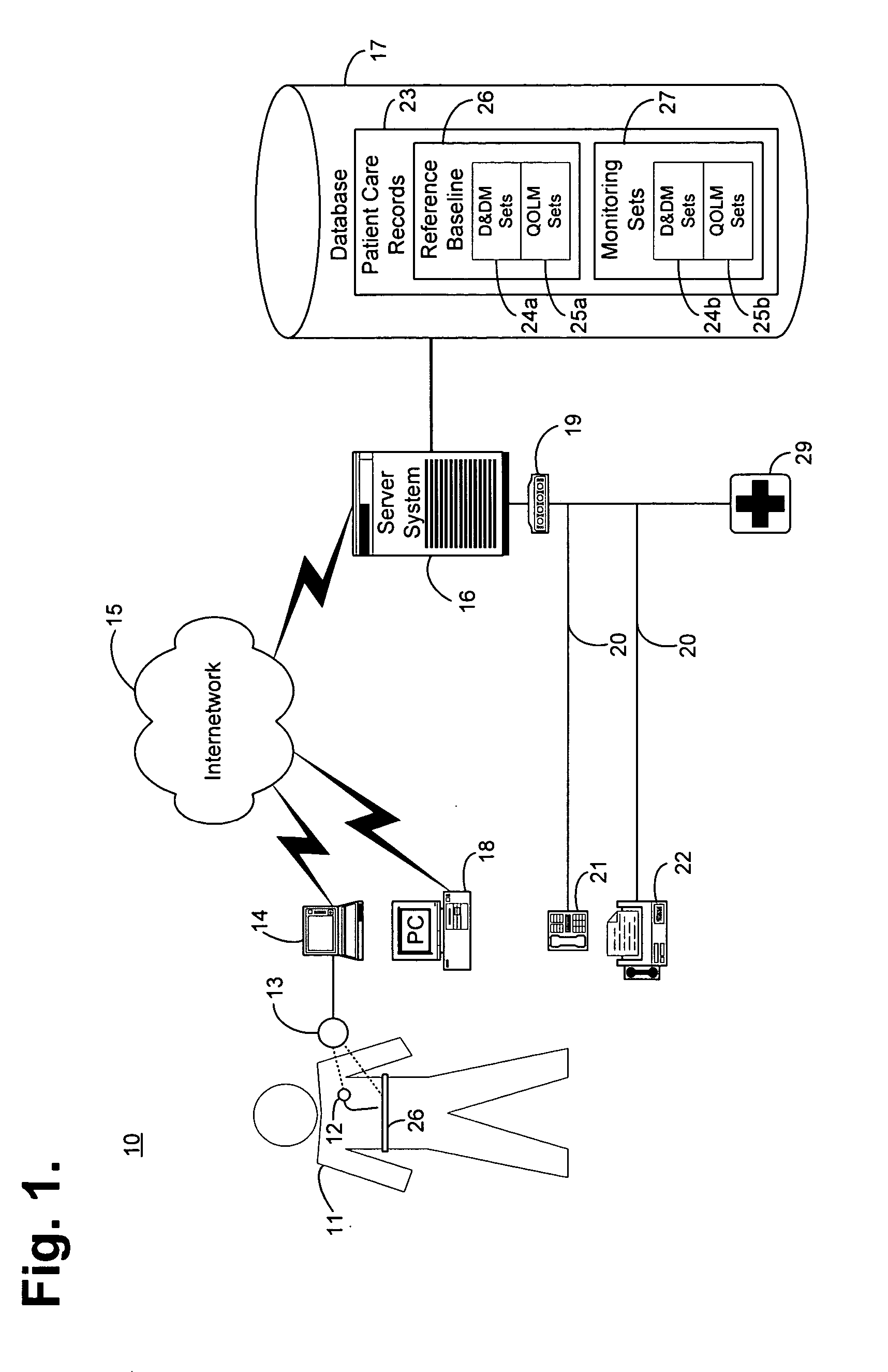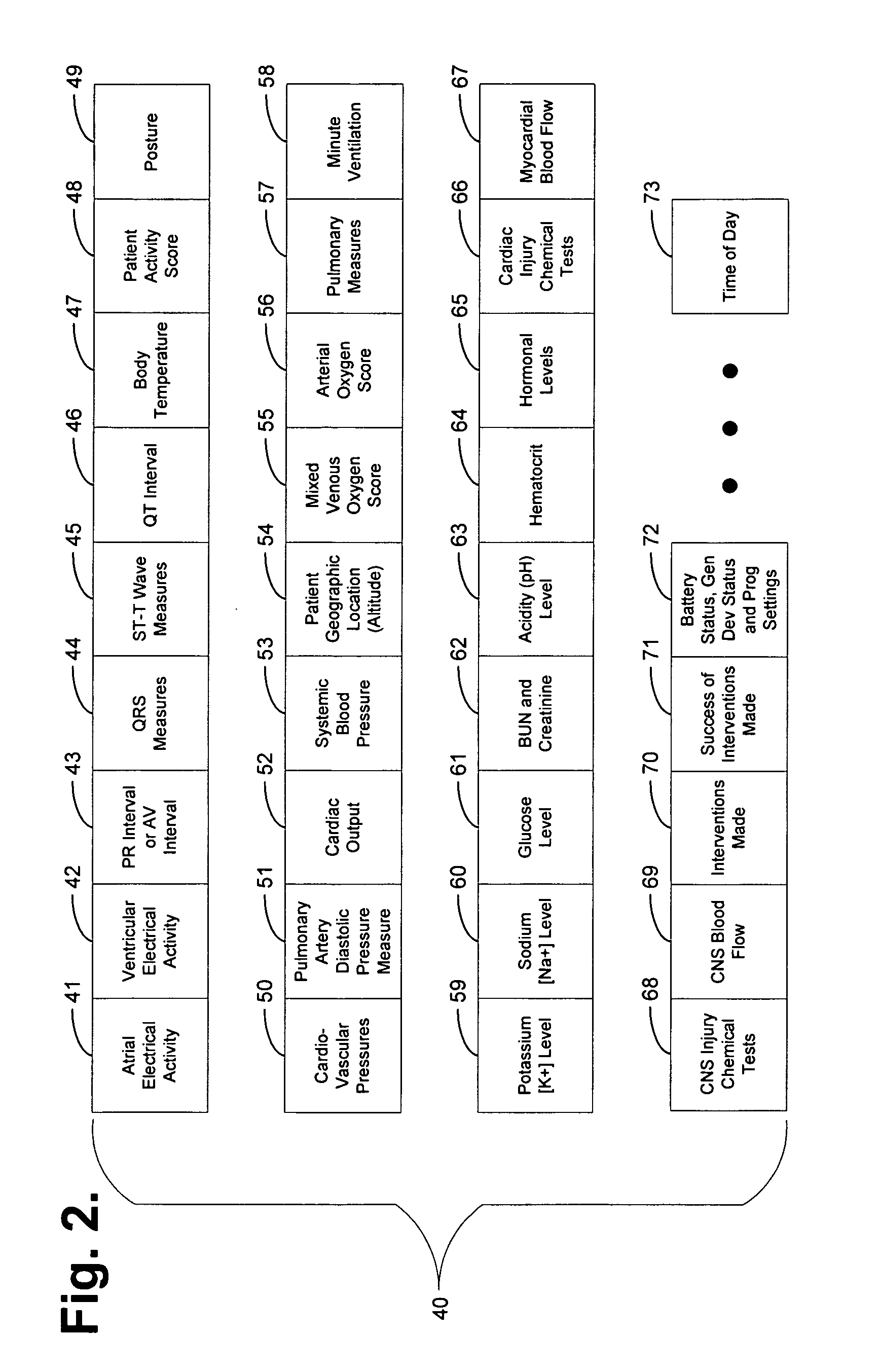System and method for analyzing a patient status for atrial fibrillation for use in automated patient care
a technology for atrial fibrillation and automated patient care, applied in the field of atrial fibrillation (af) diagnosis and analysis, can solve the problems of complicating patient management and therapy, trivial or serious disturbance to the patient's daily functions, and patient to notice disturbingly erratic heartbeat sensations
- Summary
- Abstract
- Description
- Claims
- Application Information
AI Technical Summary
Benefits of technology
Problems solved by technology
Method used
Image
Examples
Embodiment Construction
FIG. 1 is a block diagram showing an automated collection and analysis patient care system 10 for diagnosing and monitoring the outcomes of atrial fibrillation in accordance with the present invention. An exemplary automated collection and analysis patient care system suitable for use with the present invention is disclosed in the related, commonly-owned U.S. Pat. No. 6,312,378, issued Nov. 6, 2001, the disclosure of which is incorporated herein by reference. Preferably, an individual patient 11 is a recipient of an implantable medical device 12, such as, by way of example, an IPG, cardiovascular or heart failure monitor, or therapeutic device, with a set of leads extending into his or her heart and electrodes implanted throughout the cardiopulmonary system. In the described embodiment, an implantable antiarrhythmia device capable of diagnosing and treating arrhythmias can be used, such as disclosed in U.S. Pat. No. 5,931,857 to Prieve et al. and U.S. Pat. No. 5,855,593 to Olson et ...
PUM
 Login to View More
Login to View More Abstract
Description
Claims
Application Information
 Login to View More
Login to View More - R&D
- Intellectual Property
- Life Sciences
- Materials
- Tech Scout
- Unparalleled Data Quality
- Higher Quality Content
- 60% Fewer Hallucinations
Browse by: Latest US Patents, China's latest patents, Technical Efficacy Thesaurus, Application Domain, Technology Topic, Popular Technical Reports.
© 2025 PatSnap. All rights reserved.Legal|Privacy policy|Modern Slavery Act Transparency Statement|Sitemap|About US| Contact US: help@patsnap.com



